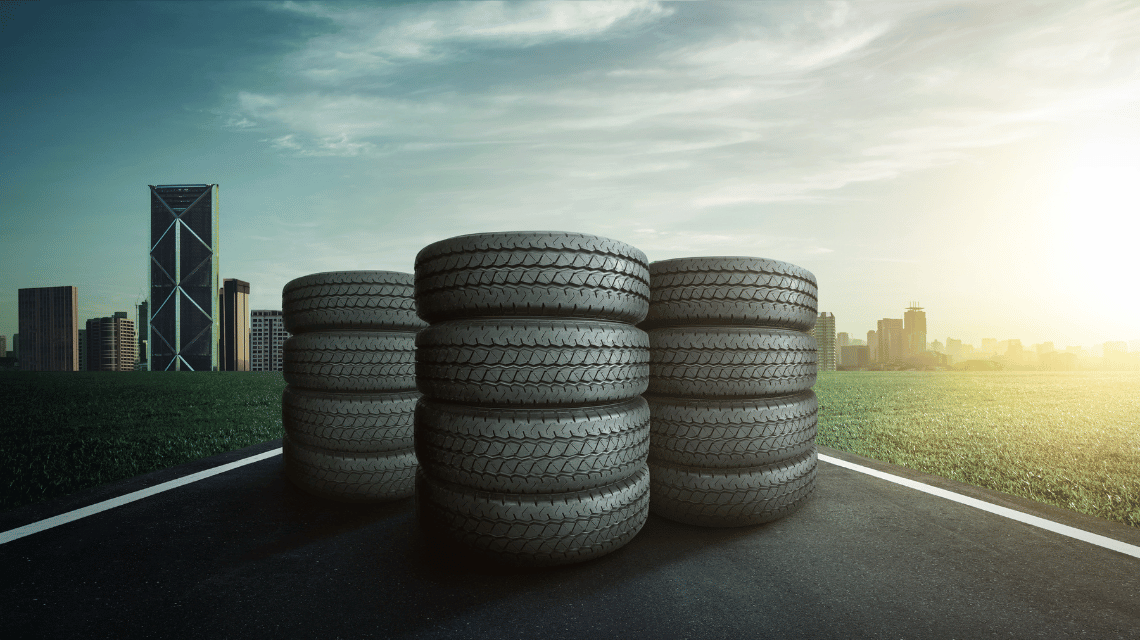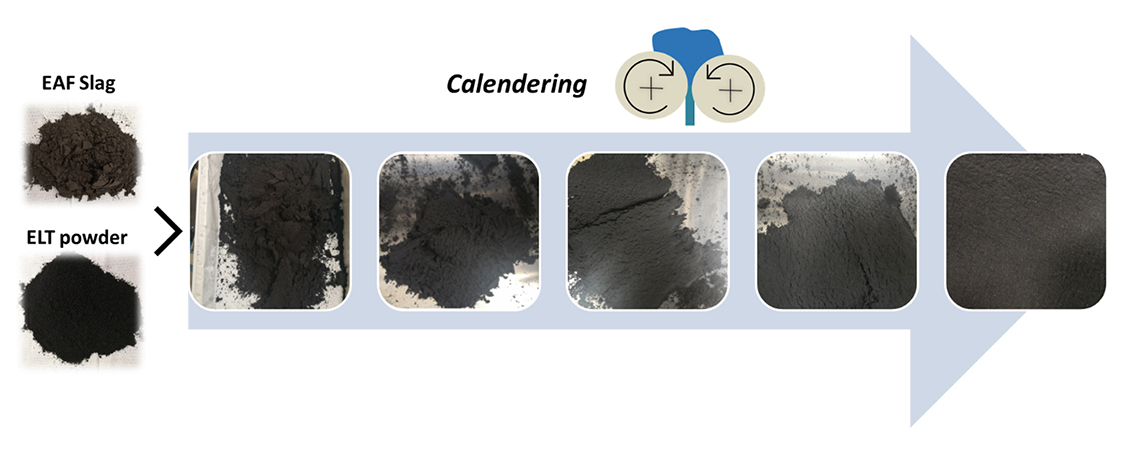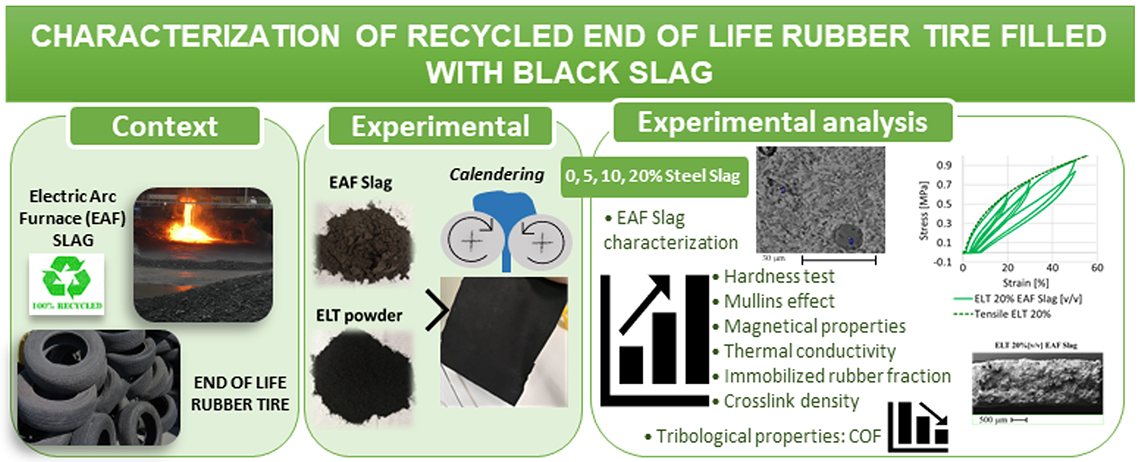Italian National Agency for New Technologies, Energy and Sustainable Economic Development

Innovation: Tire and steel mill waste turn into recycled rubber
From a combination of steel mill waste[1] and end-of-life tires, researchers at ENEA and University of Brescia have obtained a recycled rubber suitable for new industrial productions like soundproofing or anti-vibration mats. The results, published in the international Journal of reinforced plastics and composites, stem from a collaboration for the efficient use and sustainable management of resources through the new 'Sustainability Technologies' Laboratory of the ENEA Department of Sustainability of Production and Territorial Systems established at the University of Brescia (UNIBS).
“We are providing the basis to implement industrial symbiosis between two traditionally dissimilar sectors, i.e. steel and rubber in Lombardy, a region with major producers of electric furnace steel and, consequently, huge quantities of waste to be valorised”, explained Marco La Monica, economist at the ENEA Laboratory for the Valorisation of Resources in Production and Territorial Systems. "From an analysis of the local context and the production sectors - he said - we were able to identify possible symbiotic flows among companies in different sectors".
A cold working process without the addition of additives has so far made it possible to manufacture thin sheets of rubber (1 millimeter thick) which, from the first electron microscope analyses, show compactness and cohesion. “In order to assess the properties of this new material, we combined the basic ingredient, tire powder, with gradually increasing quantities of steel slag and found a reduction in the friction coefficient and an increase in stiffness. Furthermore, the iron oxide content (about 40% by weight) coming from the steel slag has given the recycled rubber magnetic properties and greater thermal conductivity, which makes it potentially suitable for applications in which heat must dissipate", explained Anna Gobetti , post-doctoral fellow at the University of Brescia.
The benefits don't end there. During the recycling process developed by ENEA and UNIBS, the steel scrap allows the chemical bond with the sulfur present in the rubber at the end of its life to be broken through a mechanical action[2]. Furthermore, there is a reduction in the release by the steel slag of some elements potentially toxic for humans, like chromium, molybdenum and vanadium, below the legal limits.
“The results obtained from the application of the slag as a filler in polymeric matrices are encouraging: on the one hand we can solve the problematic issue of slag riuse, i.e. the release of heavy metals, on the other we can formulate different types of rubber depending on their final application”, said Anna Gobetti. “For years – she concluded – UNIBS has been committed to recovering black slag from electric furnaces as a filler in polymeric matrices, focusing mainly on thermoplastic and thermosetting matrices which also led, in 2015, to the creation of a patent whose inventors include Professor Giovanna Cornacchia and Professor Giorgio Ramorino. Hence the idea of developing new polymeric matrices such as elastomers in the joint doctorate with ENEA".
Approximately 435 thousand tons of tires are used in Italy every year and only 20% is regenerated to be reused in the mobility sector. The remaining portion, about 350 thousand tons, is sent to other uses such as energy recovery in cement factories and energy production (50%), material recycling[3] (25%), or is dispersed (for the remaining 25%) thus adversely affecting the environment and resulting in a waste of resources. As far as steel is concerned, Italy is the leading country in Europe with 20.4 million tons produced in 2021 and black slags amount to around 10-15% of overall production.
“The management of the end-of-life tires and black slag from steelworks needs to step up materials recovery effort, also in view of the European waste management hierarchy and the goals of the EU circular economy action plan. ENEA and the University of Brescia provide to the foreseen applications to matter recovery for both materials, an additional one, bringing together two distinct and traditionally unconnected supply chains, with the aim of developing highly innovative and cutting-edge circular economy approaches for the environmental and economic sustainability of our country”, concluded La Monica.


Notes
[1] Black slag from an electric arc furnace, used in metallurgy to produce steel from scrap.
[2] Rubber, unlike thermoplastic materials, cannot be reprocessed with heat input alone due to the chemical bonds with sulfur which form in the vulcanization process, responsible for the elastic properties and mechanical resistance that make rubber a material in great demand.
[3] Concerning materials recovery, tires are sent to plants which, through mechanical grinding at room temperature, reduce them into increasingly smaller fragments to separate the three main components: rubber, steel and textile fibre. Rubber is used in the building industry to manufacture acoustic and anti-vibration insulation etc, in the sports sector for playgrounds, soccer fields, multi-purpose sports flooring etc. and in the road and infrastructures sector for silent and long-lasting 'modified' asphalts, cycle paths, street furniture and elements for road safety.
